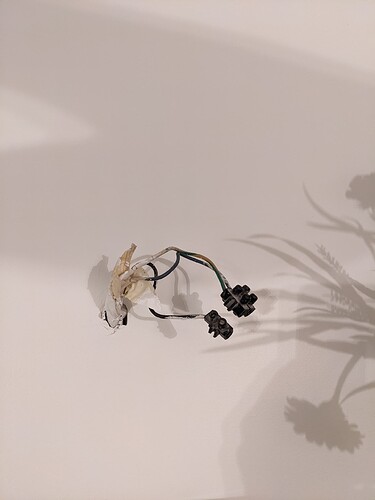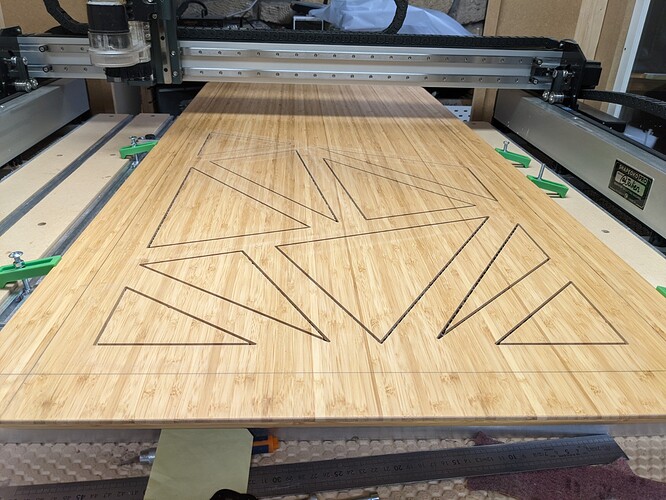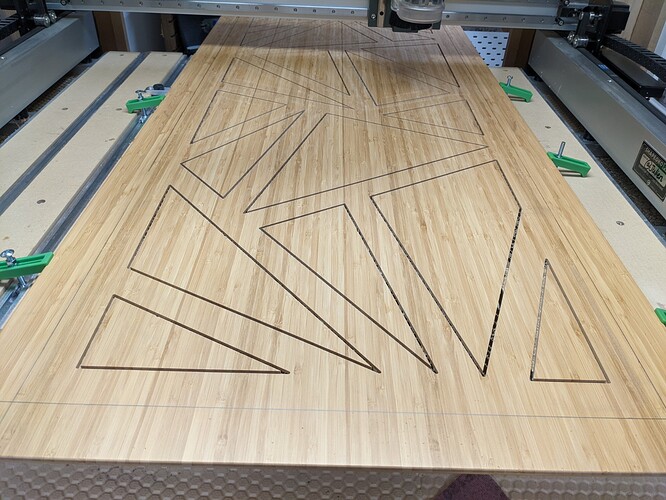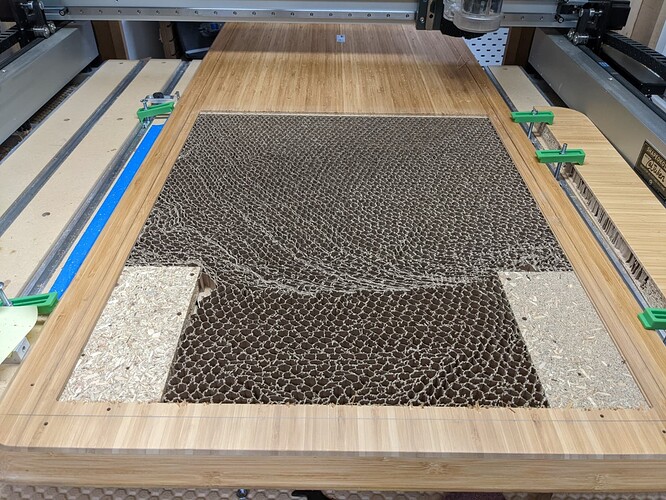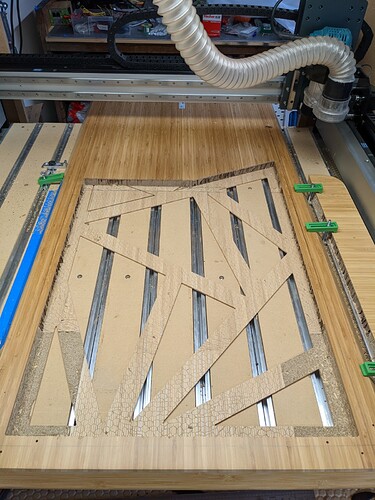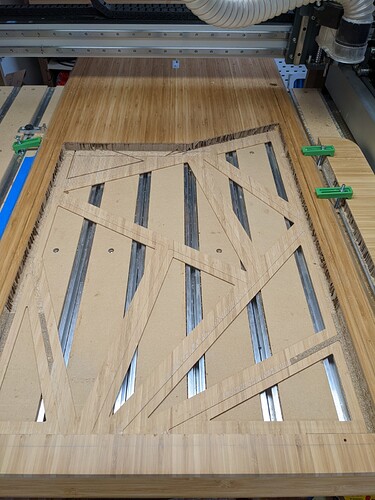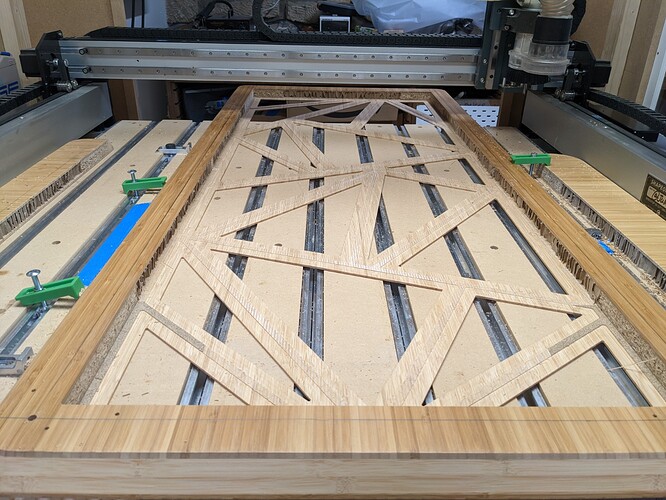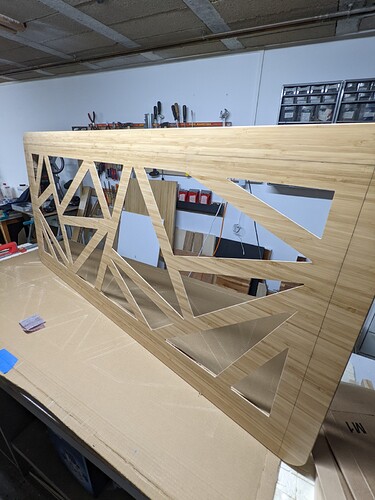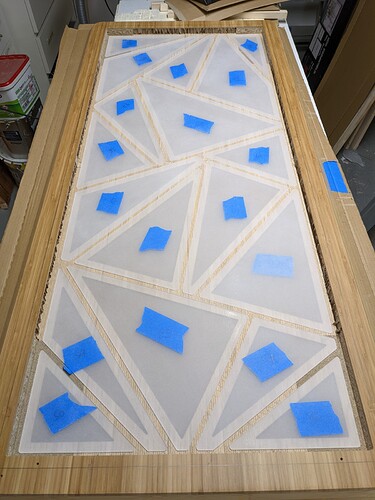Some progress over the week-end.
Prototype #2 started with carving half the triangles on the top face,
Then rotating the piece 180° and carving the remaining triangles (look ma’, no tiling required!)
I flipped the tabletop to open up its back face, again one half of the panel at a time,
which after milling away the corners and removing the paper honeycomb structure manually exposed the back of the triangles:
Then it was time to mill the triangle pockets (leaving “tracks” just wide enough to accomodate the width of the LED strips)
Zeroing off stock bottom worked great as usual. There was only 3.6mm of material left at the bottom, and I had no “internal” workholding solution at this point, so I just…used a downcut endmill, which naturally pushes the stock towards the wasteboard, and it worked like a charm:
Then I rotated the piece (again) and milled the other side:
At this point the thing is VERY lightweight, but still rigid enough for what I’ll do with it.
The pencil lines around the triangles is where I will eventually cut the piece using my track saw, to attach the frames, to have it look like so:
Then it was time to cut the acrylic backing/support for each triangle pocket,
I used 2.5mm acrylic, and my favorite single flute Amana cutter,
I sanded all the parts on both faces (phew…) and ended up with a stack of pieces,
which found their place in the pockets:
And this where I am right now. Next step: install the LED strips in-between (and around) the triangles. Then solder connections between all of the LED strips (which should be less than fun…).
And since I’m starting to worry that the triangles may look a little flat/uninteresting, I’m starting to think of carving triangles again using a translucent material to do a lithophane, using a subtle image/pattern that would spread across the whole piece. We’ll see!


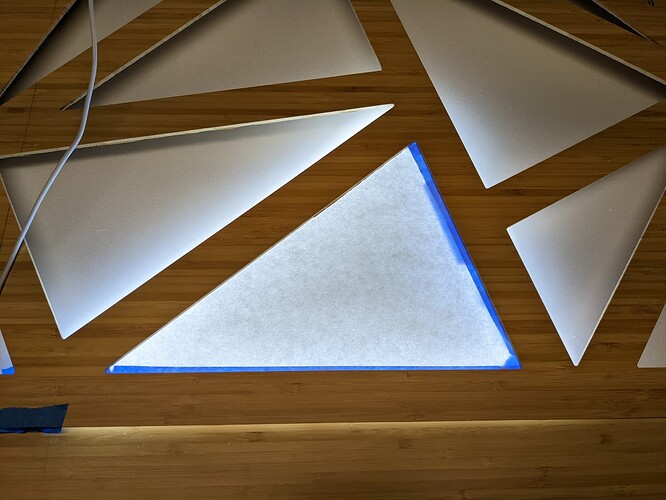
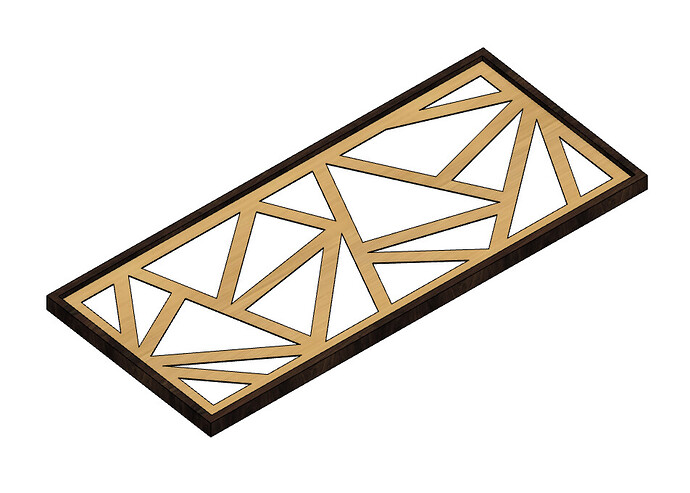
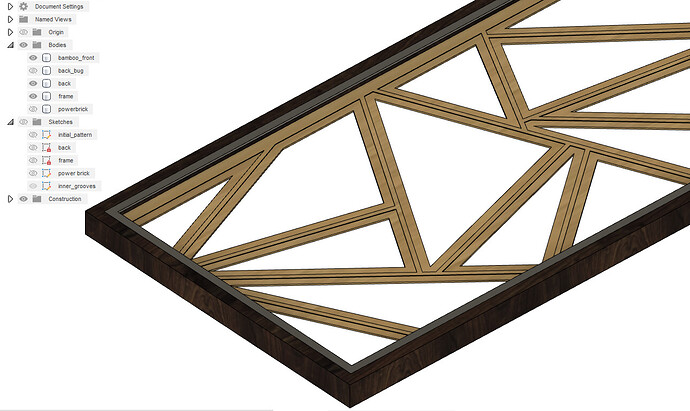

 Hopefully you can figure out something more repairable?
Hopefully you can figure out something more repairable? 
